Here are a few fungi finds for this #fungifriday by @ewkaw
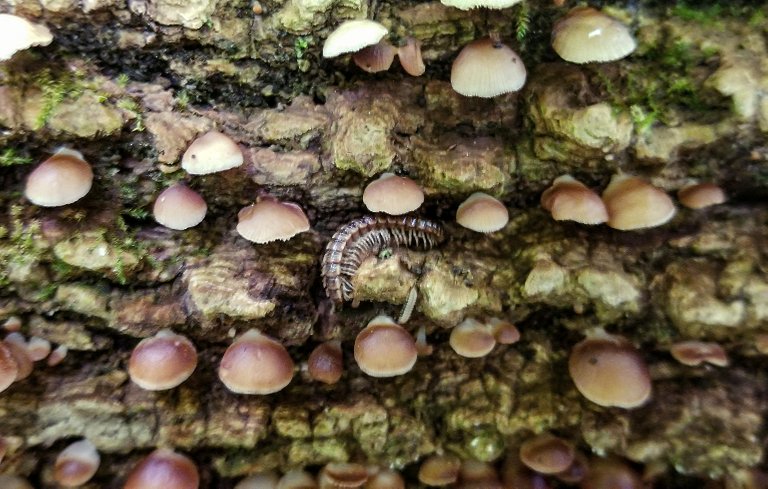
These first few are in the Crepidotus family. They kind of resemble tiny little oyster mushrooms. The millipedes also seem to love them.
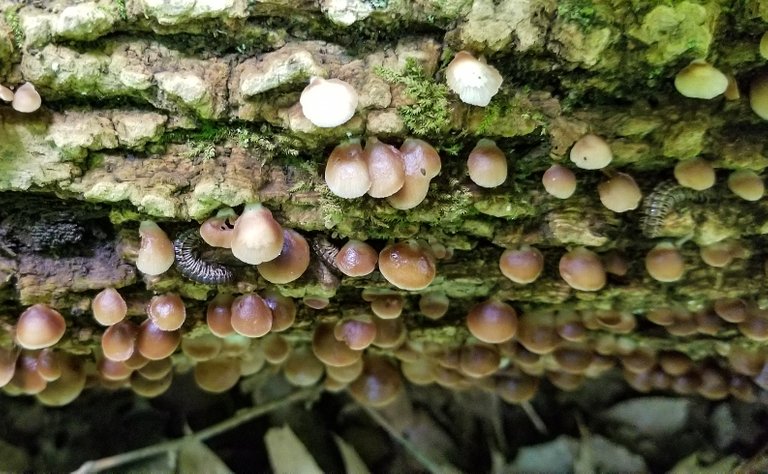
I suspect these might be Crepidotus mollis because of their brown cap color, though there are quite a few variants of Crepidotus so who knows what they might really be.
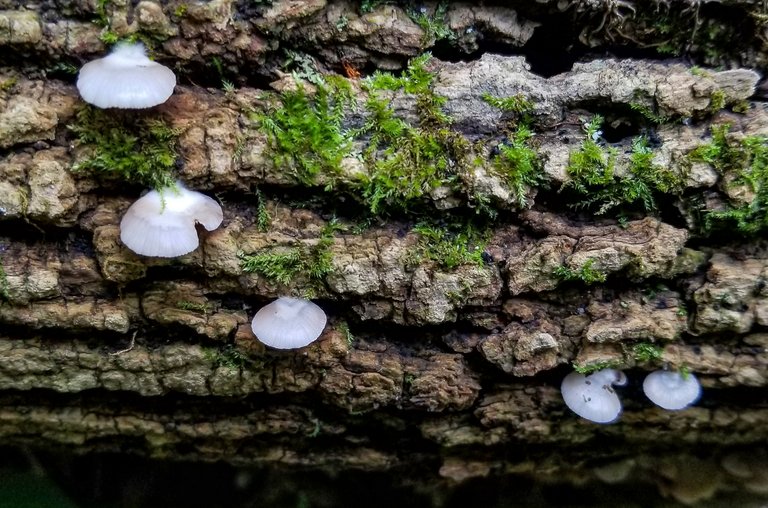
These white Crepidotus are fairly recognizable. I believe they are Crepidotus applanatus.
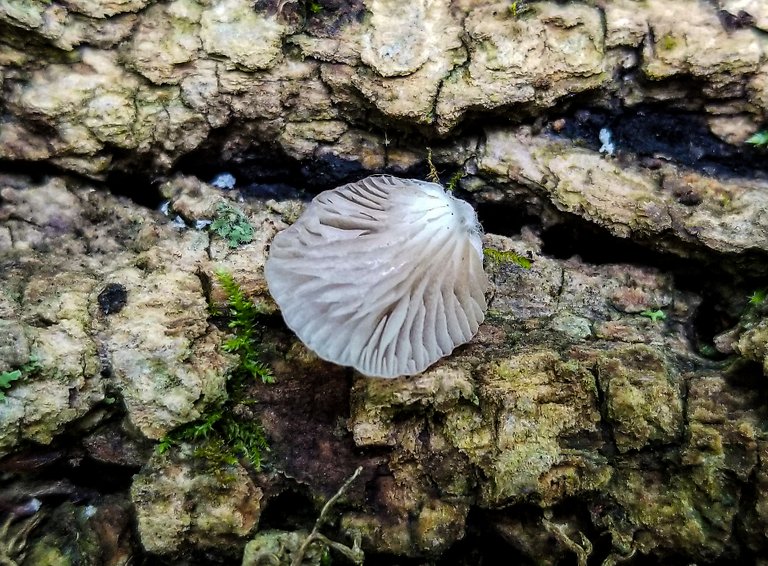
These guys only grow to about the size of a quarter. I'm not sure if they are edible or not, I'm guessing they are too tiny to really be useful for harvesting anyway. I suppose foragers could confuse these with baby oyster mushrooms and possibly consume them. I haven't found anything about them being poisonous though.
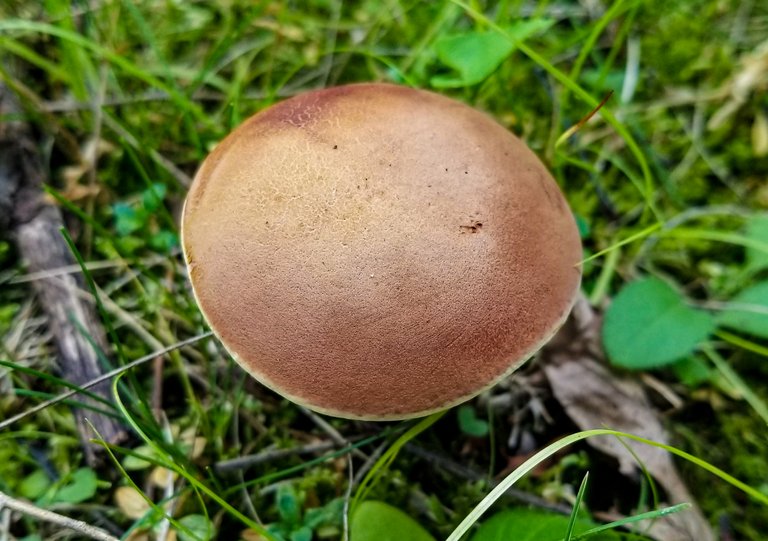
Look at this reddish brown bolete.
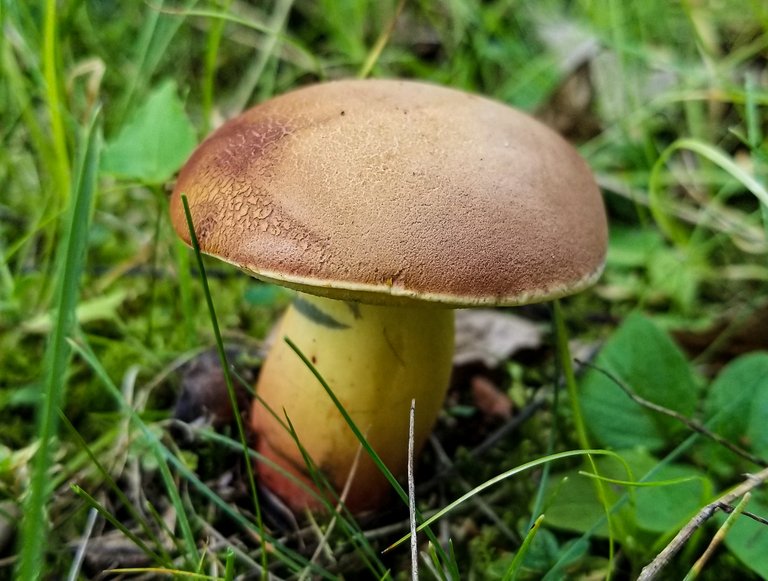
I suspect this might be a bicolor bolete but there are quite a few different species that resemble this. It did stain blue and had yellow pores. I didn't pick this particular one to see the staining because it looked too perfect like this lol.
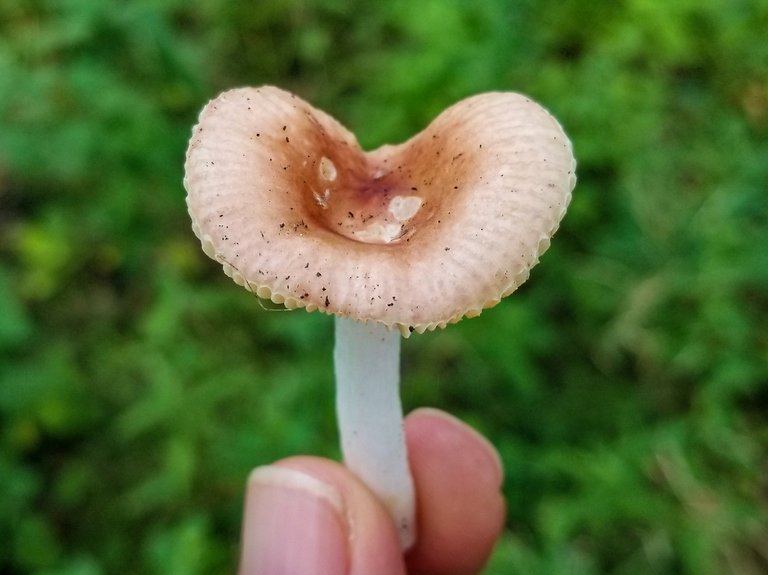
Here is a russula. I suspect it might be Russula amoenolens because of its brown color...
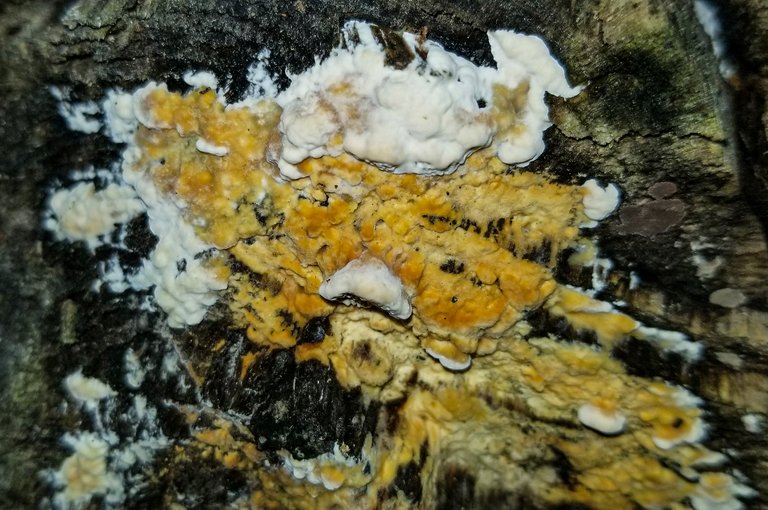
Here is a strange crust fungi growing after the rain. I suspect it will dry out into a flat crust once the rain stops. I think it might be Phanerochaete chrysorhiza aka spreading yellow tooth.
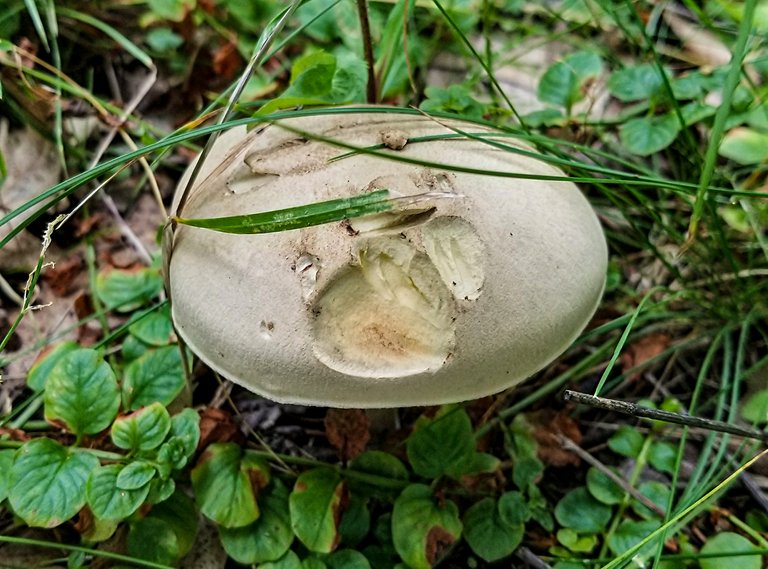
Here's a strange grayish green bolete that grew so fast that it absorbed some grass. It might be edible as well because I'm seeing quite a few rodent teeth marks in the cap.
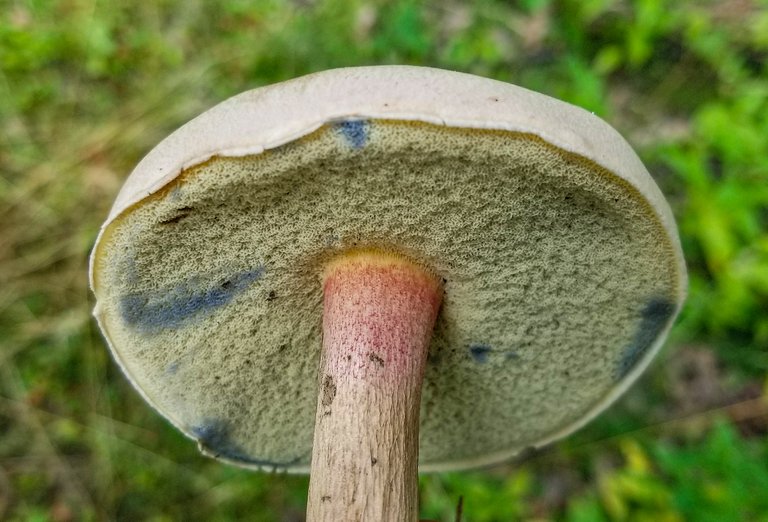
The gills are also grayish green with just a hint of red near the top of the stem. You can see the blue staining happening on the pores as well.
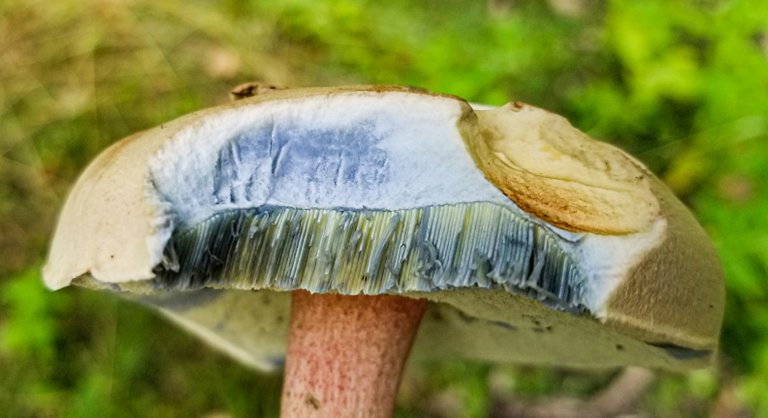
I also did a test to see if the cap's flesh bruised as well. Maybe this could be Boletus durhamensis as the cap and pores are the right color, however Boletus durhamensis doesn't have the reddish stem. Sadly I didn't do a taste test to see if it was bitter otherwise I could have confirmed it was Caloboletus inedulis which looks quite similar.
That's all for now, happy #fungifriday and thanks for looking :-)
Nice finds! Thanks for sharing. I hope we get some rain here; I miss our mushroom friends :)
The only time I can find boletes is during the summer rains, if I wait too long then they get all damaged within a few days of the rain. Or worse yet they get eaten by other fungi like this lol
Thanks for your contribution to the STEMsocial community. Feel free to join us on discord to get to know the rest of us!
Please consider delegating to the @stemsocial account (85% of the curation rewards are returned).
You may also include @stemsocial as a beneficiary of the rewards of this post to get a stronger support.
Thanks guys :-)
everything looks so awesome
Thanks so far summer has been producing a good mushroom season.
Happy #fungifriday 🍄 Nice finds. I should have read your post before my lastest foraging outing with tips on identifying boletes. I think I saw some red ones. And btw I agree that one mushroom is too perfect to mess up haha I find myself doing that too.
I find that boletes are quite tricky to ID, many of them look quite similar to eachother and quite a few are edible but many cause stomach aches as well. Then there's the non-toxic bitter ones that ruin things lol. The red ones you say might be bicolor boletes if they have yellow pores, but then again there are quite a few different red capped boletes.
Yay! 🤗
Your content has been boosted with Ecency Points, by @sketch.and.jam.
Use Ecency daily to boost your growth on platform!
Support Ecency
Vote for new Proposal
Delegate HP and earn more
Great finds @sketch.and.jam
Interesting tests 😉
Happy weekend!
Yeah the bolete tests can be quite elaborate watching how fast they stain and some people even bring chemicals with them that help identify what they are to see a specific chemical reaction.
That’s cool…
It all depends how far you want to go with it. 🤓
Have a great Saturday further!
They present us with a wide variety that makes me curious, especially the Crepidotus family
They had that dead log pretty well infested.